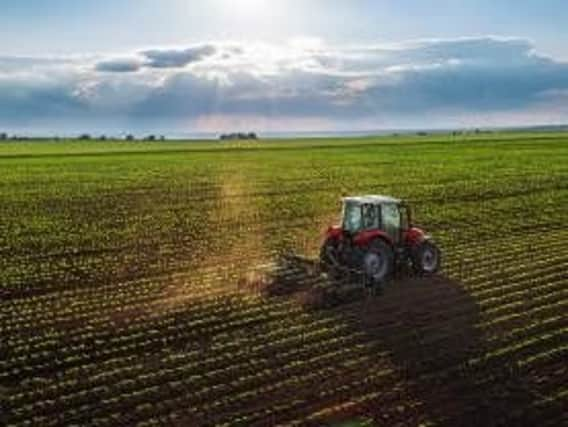Cultivating safety technology in the agriculture sector


However, striking a balance between this and safety is crucial to protect workers and prevent workplace fatalities.
In the UK, farming accounts for 20% of all fatal accidents at work, despite making up only 1% of the country’s workforce. According to the Health and Safety Executive (HSE), moving vehicles were responsible for more than a third of farm fatalities between April 2018 and March 2019.
Advertisement
Advertisement
In August 2018, a pedestrian was killed in a collision with a tractor in Belford, Northumberland.
If a serious accident occurs, any productivity gains could be lost, with farmers facing insurance claims and even prosecution.
Hazards to workers from tractors and other farm machinery can be caused by various factors.
Design of modern machinery has led to significant performance improvements, but the nature and size of these machines mean operator visibility can often be impaired.
Advertisement
Advertisement
Blind spots are a huge contributory factor in many incidents involving agricultural machinery.
The shape, size, and elevated operator positions all limit the field of vision for an operator making it difficult to spot objects or people in the immediate vicinity.
Technology is helping to solve these issues by eliminating blind spots on machinery and assisting operators working in difficult conditions when visibility can be compromised, such as overnight or in bad weather.
Commercial vehicle safety systems can give drivers better visibility as they manoeuvre their vehicles by providing the driver with a complete surround view of the vehicle in real time in a single image.
Advertisement
Advertisement
A 360-degree camera system, such as Brigade’s Backeye®360, combines images from ultra-wide-angle cameras, resulting in a ‘bird’s-eye view’ of the vehicle and surrounding area.
Research has shown that in the time it takes to scan four mirrors, assess and then react to hazards, a vehicle could travel as far as 33 feet.
Vehicle camera safety systems protect the driver and ground workers in the vicinity of the vehicle.
Radar obstacle detection technology is further enhancing safety in the agricultural industry.
Advertisement
Advertisement
It alerts drivers to potential risks and works by emitting a frequency-modulated continuous-wave radar that is faster than pulsed-radar products.
Some detection systems can produce false alerts, which can lead to frustration for drivers, resulting in genuine alerts being disregarded.
Continuous-wave radar protects against false alerts, thanks to the controlled beam pattern, which can be programmed, allowing organisations to fix a custom detection area specifically suited to their needs.
When a moving or stationary object is detected, the driver is alerted via an in-cab visual display and an audible warning.
Advertisement
Advertisement
Heavy duty radar systems are able to operate even in high or low temperatures.
Radar obstacle detection is also waterproof and dust resistant and can be easily heard in noisy environments.
The display and sensor are also completely dust tight and protected from close range, powerful and high temperature water jets making radar ideal for vehicles with external cabs or those exposed to the elements.
While technology is a key part of helping prevent injuries and deaths, simply installing commercial vehicle safety systems doesn’t mean an operator’s safety obligations have been met.
Advertisement
Advertisement
It is also essential for the industry to be fully committed to improving and implementing robust safety strategies so that demonstrable progress can be made, and fatalities and serious injuries can be prevented.
Brigade Electronics will be attending AGRITECHNICA on November 10-16 November in Hanover, Germany. You can speak to its dedicated team of specialists by visiting Stand 17F56.